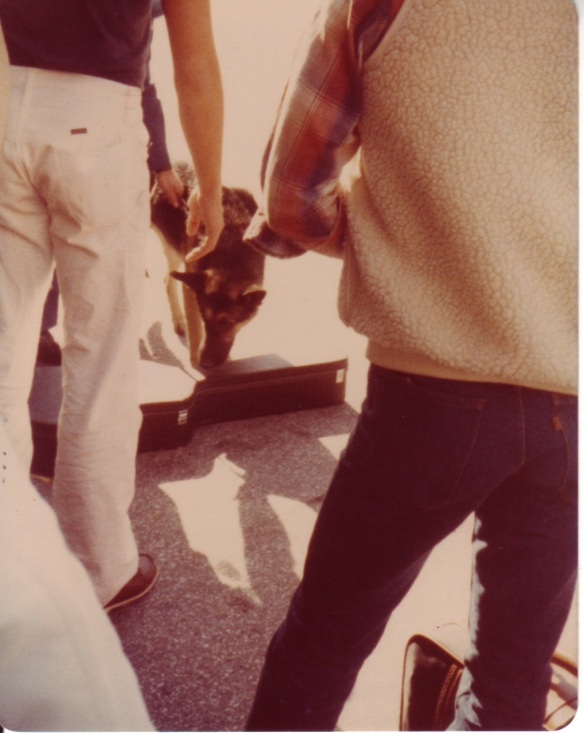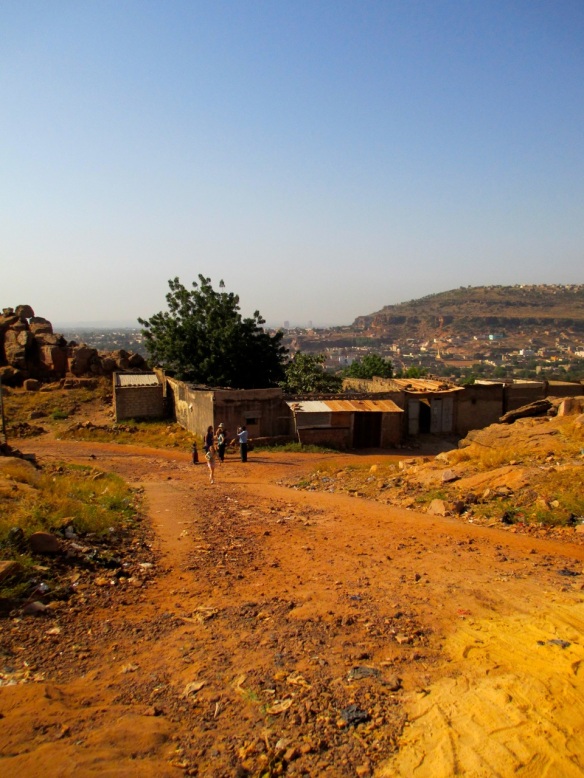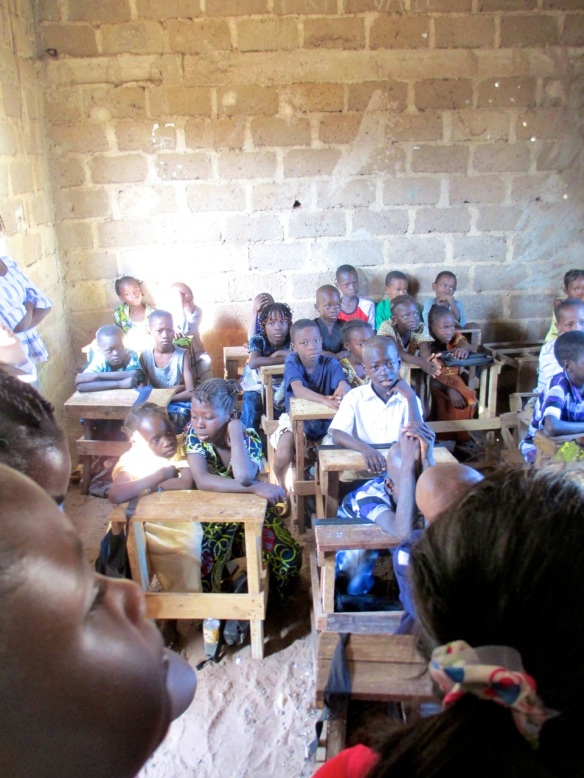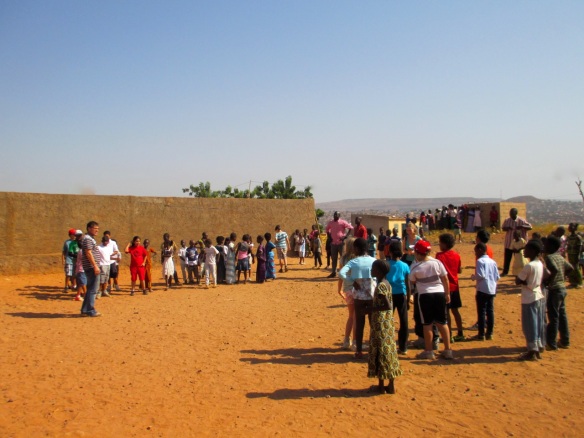No doubt about it, field trips make teachers as gleeful as the students. I mean c’mon, what educator doesn’t enjoy a break from the routine, a glimpse of the world outside of those classroom walls, an occasion for the “real world” to be the teacher, an opportunity to get to know a different side of your students, and a perfect chance to “lose” a student you don’t particularly care for (“Seriously Principal Jones, I really have no idea how Timmy got locked inside that ancient Egyptian sarcophagus in the museum.”)
So it’s just utterly depressing that field trips in the U.S. are becoming as rare as a third grader without a cell phone. There was a time when field trips were a normal part of the curriculum, as routine as those bad baby showers in the school library where I always chipped in to buy “ones-ies” for some teacher I hadn’t said two words to in three years (and I still don’t know what “ones-ies” are).
But now field trips have mostly gone the way of the dodo bird and recess and smoking in the teacher’s lounge…even though field trips can be an important part of the curriculum.
Now granted field trips didn’t always appear on the surface to be related to the curriculum, but scout’s honor they were. Growing up in rural Illinois, I recall yearly trips in junior high to the Six Flags amusement park in St. Louis, Missouri where we would ingest as much fat and sugar as possible before riding an upside-down roller coaster and discovering just how the body’s digestive system does/doesn’t work.
Or how one could use an umbrella and a wad of gum to rescue coins from the fountain and finance another trip to the sno-cone cart. Or how certain chemicals in Mountain Dew can remove the vomit smell from your clothes. Or how certain forces, maybe evil ones, can allow your spit to travel in many directions on spinning rides. These valuable life lessons have stayed with me for years.
I can remember going on plenty of non-vomiting field trips too. We once visited New Salem State Historic Site near Springfield, IL, a reconstruction of the village where Abe Lincoln spent his early adulthood.
I can still remember asking the guide what they sold at the general store back in Abe’s day. She said, simply, “A lot of liquor.” And our two teachers tried to secretly give each other the thumbs-up sign except we all saw them. So history for me has always had positive, liquor-related connotations. Now excuse me while I go study Samuel Adams six to twelve more times.
There were plenty of other field trips too. In high school we went to the movie theatre to see the rerelease of Zeffirelli’s Romeo and Juliet—you know the one where we see Romeo’s butt and Juliet’s boobies for a millisecond each? Of course back at school those were the only milliseconds of this 138-minute film we could recall in vivid detail.
In elementary school we visited the potato chip factory where we all decided we would work one day since we figured the workers ate as many free chips as they wanted. We also went to art museums where I remember our 4th grade selves sprawling on the ground to look up the dress of a realistic sculpture of a woman and getting a quick anatomy lesson.
I also remember a fantastic college field trip to Toronto where we came up with redesign plans for the urban waterfront to make it more pedestrian friendly, toured the city to see cutting-edge urban design work, and watched Canadian Border guards use a drug-sniffing dog to find pot in one of my classmate’s guitar case. Good times.

Drug sniffing dog finds what it’s looking for in our classmate’s guitar case. And it’s not sheet music.
But these days, school is all about that damn high-stakes test in the spring. If a school activity doesn’t involve a multiple-choice question or a fact that can be memorized and regurgitated, it’s not seen as valuable. Never mind that not a shred of evidence supports this drill-and-kill nightmare approach to “instruction.” And never mind that it numbs kids’ brains and makes them hate school. It’s enough to drive a teacher to drink. Or at least take a field trip that supports that habit. My old school district back in Florida actually had an official “blackout period” in the months preceding the state test–no field trips, no guest speakers, no sending teachers out of the school for professional development. What WAS allowed was having kids sit bored in their classrooms answering multiple-choice questions to prepare for the state test that’s comprised of multiple-choice questions. On that note, I’ve got a question for people who believe that approach makes sense:
My old school district back in Florida actually had an official “blackout period” in the months preceding the state test–no field trips, no guest speakers, no sending teachers out of the school for professional development. What WAS allowed was having kids sit bored in their classrooms answering multiple-choice questions to prepare for the state test that’s comprised of multiple-choice questions. On that note, I’ve got a question for people who believe that approach makes sense:
1. Why are multiple choice tests stupid?
a. They lead kids to believe that there is just one “right” answer to every question.
b. Kids can answer correctly without actually thinking or problem solving or even reading the question.
c. They give kids no way to apply the knowledge they have learned.
d. They purposely include “distracter” answers that are wrong or confusing, like “none of the above” or “all of the above.”
e. All of the above.
But seriously, what moron doesn’t understand the benefits of a field trip? Would you rather read a worksheet about chocolate production, or pay a visit to the Snickers factory? Analyze a report on the effects of alcohol on your short-term memory, or participate in some experiments at the Absolut headquarters? Memorize the process of human reproduction or….oh well, I think you get the picture.
Now that I’ve escaped that madness by leaving the country, I have a new appreciation for the power of field trips, especially as they relate to service learning. This is one educational trend that doesn’t suck at all. Basically service learning means that you involve students in a community service project that also incorporates one or more academic areas. They learn academic skills, help their community, and hopefully understand that they can make a difference in this world by stepping away from the PlayStation.
So with the wind back in my sails in a brand new non-test-obsessed school, I’ve partnered my class with a U.S.-based, non-profit organization here in Bamako called Mali Health whose mission is to “empower impoverished urban communities in Mali to transform maternal and child health sustainably.” As far as mission statements go, that’s a biggie because the situation here in Mali is just darn scary. For starters:
- life expectancy in Mali averages 49 years
- 93% of Malians live in poor, urban communities (AKA slums)
- Mali is one of the 15 poorest countries in the world
- 1 in 5 children dies before age 5
- 1 in 3 children are underweight
- 1 out of 22 women die from maternal complications
A month or so ago Mali Health did a short presentation at our school that really piqued my students’ interest. They were especially interested in the fact that the communities Mali Health serve have no sewage systems, plumbing, or electricity. And as usual they dwelled on bathroom-related questions, such as:
- So the people poop in holes? (affirmative)
- Does it smell? (affirmative)
- Does it ever leak out? (yes, and contaminating nearby wells)
- Who cleans out the holes when they get full? (someone is lowered in, and he shovels it out)
- Do they use toilet paper? (varies)
- Do they have flat screen TVs in their latrines? (OK, I just made that one up, but I’m sure they were thinking this)

A latrine under construction in Sikoro. Photo: ©Sikoro Teriw – http://www.sikoro-mali.org
Working with their energetic young director we decided that my students would create graphic novels (the fancy name for comic books) that teach about malaria prevention—but in an entertaining way that would engage kids.
Malaria is a big problem in sub Saharan Africa, especially this year. Most of the teachers and students at my school have fancy mosquito nets over their beds, have plenty of mosquito spray in a variety of scents and consistencies (I prefer Off Smooth & Dry Powder Formula),  and take weekly preventative malaria medication. If we do get malaria it is easily treatable with a 3-day course of pills that cost $7 at the pharmacy (no prescriptions required for meds here). For most of us malaria is nothing more than flu-like symptoms that go away quickly with the meds.
and take weekly preventative malaria medication. If we do get malaria it is easily treatable with a 3-day course of pills that cost $7 at the pharmacy (no prescriptions required for meds here). For most of us malaria is nothing more than flu-like symptoms that go away quickly with the meds.
But the folks in these impoverished communities don’t have these luxuries, though I doubt many Americans consider a can of Off Bug Spray a luxury. A doctor visit and malaria meds would cost a Malian about $10 total—or about 10% of a skilled worker’s average salary here. Quite a few organizations do donate mosquito nets.
But tightly woven nets keep out mosquitoes AND breezes—not exactly a plus in an oven-like climate—so they are used as fishing nets or room dividers or bridal veils (which totally sounds like an episode of Project Runway or Design Star).
On top of everything else, because malaria is common and can go away on its own, folks here don’t consider it a big deal, even though it can actually kill them if left untreated.
So the plan is for my kids to create these books to help create awareness about this illness, and Mali Health will distribute them to local school children. Since these local kids either speak Bambara (their first language) or French (taught in schools here) my students will first write their text in English, then translate it into French. Thankfully our AISB French teachers will assist. My French language skills, while improving, are still in the Tonto-sounding phase (“Me happy big feast tonight Ke-mo Sah-bee.”)
The great part is that while my students are creating something that can potentially save lives, they are practicing their reading, writing, science, and French skills in a real world way that doesn’t require a single photocopied worksheet or multiple-choice question. I tried this approach once back in the States, where four years ago I had my students create PSAs to encourage people to spay and neuter their pets. Long story short, the Humane Society of the United States put them on DVDs and sent them to shelters nationwide, and the Humane Society still has a link to them on their website (see link at bottom of that page). Here are two of the PSAs:
To get the ball rolling we decided a field trip to the Mali Health office would be in order so that my students could receive background information on malaria transmission and prevention from the experts. So the director put together a full morning of activities and a week ago we headed to Sikoro, a peri-urban slum on the outskirts of Bamako with 80,000 residents (peri-urban, a word I just learned too, means this was once a rural area that has become urbanized). Over 90% of Mali’s population lives in poor urban communities like Sikoro.
Aside from the obvious fact that this is a slum, I have to say that the locale is fabulous! The community begins at the bottom of a very large hill and climbs right up the side, all the way to the top. So like the hillside shanty towns in Rio de Janiero, Brazil with gorgeous viewsover the city, Sikoro gives you amazing views over Bamako.
But the roads in there, wow. Our two school vans struggled to navigate the steep dirt paths, full of giant craters and gullies, strewn with trash, and filled with people going every which way.
The Mali Health office, a simple structure with rooms open to the outside, was our first stop. There we presented Devon, the director, with a donation of funds our class raised running two booths at our school Halloween carnival. Devon and Matt gave a short but kind of scary presentation on malaria that will forever make me keep the mosquito net canopy tight over the bed while I live in West Africa, or maybe anywhere in the world except for Antarctica.
Next we walked/hiked up and up and up rambling roads to Bandiagara Coura Elementary School, one of the local schools in Sikoro and one of the potential audiences for our malaria prevention graphic novel. Again, a fantastic locale on a hilltop that, in an alternative universe, would be the perfect setting for a luxury hotel or my sprawling mansion (hey, a teacher can dream, can’t he?).
But instead here sat the school, several unpainted, concrete block rectangles comprised of three or so side-by-side classrooms. There were no doors. Above each doorway someone had quickly hand-painted the grade level. The classrooms were no more than 12 by 12 feet with dirt floors and a single window opening without glass or a screen. There was no electricity, hence no lights. Thirty kids sat scrunched together at little wooden desk/bench combos meant for about half that many. A piece of plywood painted black was nailed to the front wall and covered with chalked on French sentences.
The crazy thing is that this is a PRIVATE school that has better conditions than the public schools (which kids have to pay to attend too, just not as much). To attend this private school these kids pay anywhere from $5.00 to $18.00/month. It doesn’t sound like much, but remember a skilled worker here makes a whopping average of $100/month. So having a few kids in school could wipe out a big chunk of your salary.
It was the first time I saw my students speechless. Really, they couldn’t even think of one question to ask the kids in the classroom. My vision was that this part of the visit was going to be a dynamic, back-and-forth conversation between my kids and the Bandiagara Coura kids, discovering that even though they were from vastly different worlds they were all just kids when it came down to it. Nuh-uh. Now it looked like the rich kids ogling the poor kids, and vice versa.
I suppose I understand their reticence though. After all, we had just left our expansive 18-month-old school overlooking the Niger River, with LCD projectors and classroom sets of MacBook computers and a bakery shop in our lobby and our classroom with 6 ceiling fans and sliding windows on three sides and a floor plan that is so huge for the 18 of us that I have room for an acting area, a library area, round tables for student seating, a teacher zone, a walk in closet, a computer area. And where I recently put in a work order because I didn’t think the AC was quite cool enough. Now, in 15 minutes, we were in the real world–at least as far as Mali is concerned—and the contrast was massive.
For the most part my students come from privileged backgrounds. They travel internationally at least a few times a year. They have maids, gardeners, and drivers. Their parents have great jobs in embassies, big mining companies, or international aid organizations. They mostly are kept far away from places like Sikoro, so I can understand why they were a little tongue-tied as they stared at 30 kids crammed into a room that would fit twice into our own school’s hedge maze garden (yep, we have a hedge maze at school).
After some awkward silence my students and the Bandiagara Coura students headed to a nearby dirt play field where the Mali Health staff taught a capture the flag style game. Except this one involved students playing either humans, mosquitoes, or the malaria virus, and the goal was to capture the mosquito eggs (small plastic balls, thank goodness). Together the students kicked up quite the dust storm, but from what I could see (and taste) through the brown fog they seemed to be enjoying themselves.
Then it was time for another hike, this time back down the hill along more rambling dirt roads. I have to say that up there at the top it didn’t seem so slummy. The small plaster houses with tin roofs were mostly spaced apart on the hillside, kind of reminding me of some rural areas in Greece. You could see for miles over the chaos of Bamako while standing in peace and quiet.




 But, as we made our way down and the community grew denser, it felt more like a slum. Since there are no sewage systems, dirty water of some sort trickled down the wrinkles in the dirt road. It did not have a pleasant odor.
But, as we made our way down and the community grew denser, it felt more like a slum. Since there are no sewage systems, dirty water of some sort trickled down the wrinkles in the dirt road. It did not have a pleasant odor.  It pooled here and there into puddles where I am sure Ms. Mosquito and her ten trillion closest friends have a hopping shindig every night, from dusk to dawn. The smell was somewhat intense too, gag-inducing actually, and we all pulled our shirts up over our noses for the better part of tour hike.
It pooled here and there into puddles where I am sure Ms. Mosquito and her ten trillion closest friends have a hopping shindig every night, from dusk to dawn. The smell was somewhat intense too, gag-inducing actually, and we all pulled our shirts up over our noses for the better part of tour hike.
Before long we arrived at Sourakabougou Clinic, a tiny public health center for the residents. After a quick talk with the very young head doctor ($250/month salary BTW), we broke up in groups of three to tour the facility, which like the school is a concrete block structure with tiny, un-airconditioned rooms.
 One fit only four, old metal twin beds placed side by side which held malaria patients, each with an IV drip in their arm. Another, about half the size of that one, held two metal tables with stirrups—the birthing room. It was a sobering experience for my students who, if they need medical care, usually travel to Paris or the States to very fancy schmancy clinics.
One fit only four, old metal twin beds placed side by side which held malaria patients, each with an IV drip in their arm. Another, about half the size of that one, held two metal tables with stirrups—the birthing room. It was a sobering experience for my students who, if they need medical care, usually travel to Paris or the States to very fancy schmancy clinics.
Back in our own classroom the kids were so beat they collapsed into our comfy beanbag chairs (not sure I saw many of those at the Bandiagara Coura school) and I postponed the math test we were going to take. We had walked a lot that day in some pretty intense sun on some pretty crazy paths, and gave our senses quite a workout too (especially our sense of smell).
The kids were exhausted, but they were buzzing (haha) with ideas for our graphic novel about malaria and how they wanted to help the school and the kids in that community. There was talk of a school supply drive and hosting their students at our school for a day. One boy even remarked that today he realized “how lucky he really was.” Another said, “Even though they don’t have very much, they didn’t seem sad at all.”
So to summarize, my students were enlightened about malaria, poverty, community service, and life because
a. they were forced to memorize this information from a textbook at school.
b. they read a passage about this information on a worksheet, then answered five multiple-choice questions.
c. they read this information on Wikipedia.
d. they went on a four-hour field trip.


























